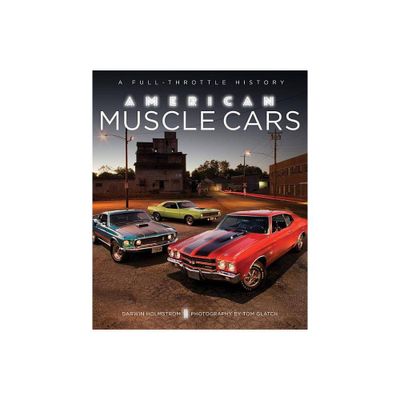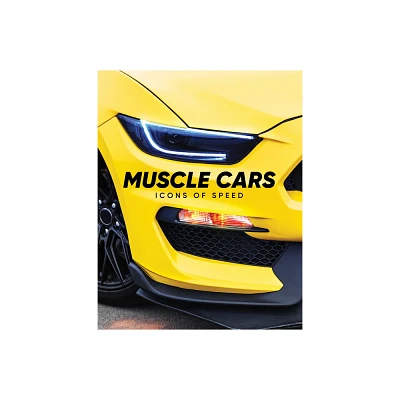Home
Detroit Muscle: Factory Lightweights and Purpose-Built Muscle Cars
Loading Inventory...
Barnes and Noble
Detroit Muscle: Factory Lightweights and Purpose-Built Muscle Cars
Current price: $44.95


Barnes and Noble
Detroit Muscle: Factory Lightweights and Purpose-Built Muscle Cars
Current price: $44.95
Loading Inventory...
Size: OS
*Product Information may vary - to confirm product availability, pricing, and additional information please contact Barnes and Noble
Explore the evolution of the fastest, most powerful, and exciting American vehicles from the muscle car era with this historical volume.
The muscle car era, and the era that immediately preceded it, are unique windows in time. Post-war USA was a place where people wanted to move on from the horrors of conflict, to embrace an era of peace, and to pursue, well, all sorts of things. A whole generation was entering a new prosperity with home ownership on the rise, gainful employment increasing, the building of suburbs, and a new interstate system connecting everyone. That all helped increase our dependence upon, and in turn, deepen our love affair with the automobile.
It started in the 1950s, when automakers realized that if they made their cars more powerful than brand X and won races on the weekends as well, sales would follow those victories into the dealership. Not everyone was enamored with all this new-found performance, however, and throughout the late 1950s and early 1960s, a struggle developed between building faster automobiles and appearing responsible and promoting the cause of safety. This led to racing participation on an all-out corporate level, followed by voluntary self-imposed and publicized bans, backdoor cheating on said bans, and then investing in performance again.
A byproduct of all this activity was some really fascinating and exciting cars. It began with standard-chassis cars growing bigger with more powerful engines. Then they graduated to being lighter, putting big engines into midsize chassis (muscle cars), and building race cars that barely resembled anything on the street.
From early Hudson Hornets to the birth of the Hemi, this book covers historical advancements and changes in the industry, making it a must-have item for any automotive enthusiast’s shelf.
The muscle car era, and the era that immediately preceded it, are unique windows in time. Post-war USA was a place where people wanted to move on from the horrors of conflict, to embrace an era of peace, and to pursue, well, all sorts of things. A whole generation was entering a new prosperity with home ownership on the rise, gainful employment increasing, the building of suburbs, and a new interstate system connecting everyone. That all helped increase our dependence upon, and in turn, deepen our love affair with the automobile.
It started in the 1950s, when automakers realized that if they made their cars more powerful than brand X and won races on the weekends as well, sales would follow those victories into the dealership. Not everyone was enamored with all this new-found performance, however, and throughout the late 1950s and early 1960s, a struggle developed between building faster automobiles and appearing responsible and promoting the cause of safety. This led to racing participation on an all-out corporate level, followed by voluntary self-imposed and publicized bans, backdoor cheating on said bans, and then investing in performance again.
A byproduct of all this activity was some really fascinating and exciting cars. It began with standard-chassis cars growing bigger with more powerful engines. Then they graduated to being lighter, putting big engines into midsize chassis (muscle cars), and building race cars that barely resembled anything on the street.
From early Hudson Hornets to the birth of the Hemi, this book covers historical advancements and changes in the industry, making it a must-have item for any automotive enthusiast’s shelf.


















